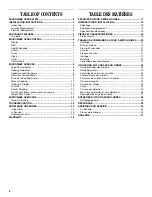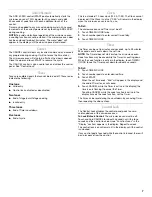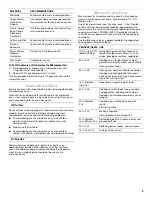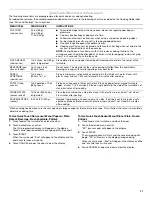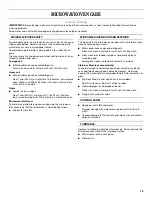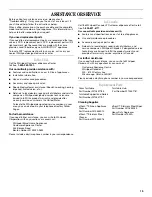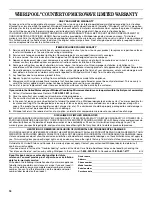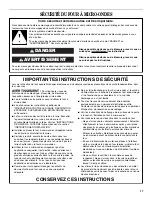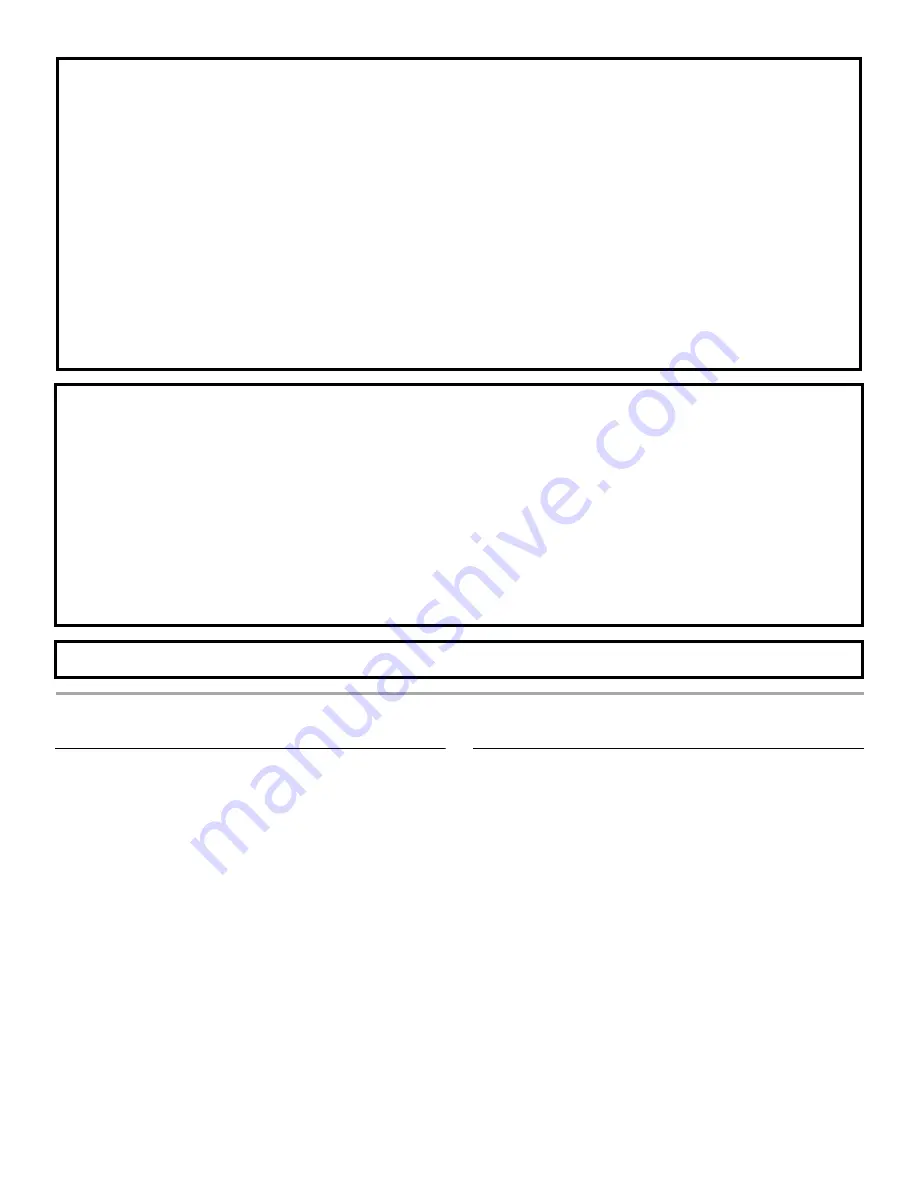
4
INSTALLATION INSTRUCTIONS
Unpacking
1. Empty the microwave oven of any packing materials.
2. Clean the inside with a soft, damp cloth.
3. Check for damage, such as:
■
a door that is not lined up correctly
■
damage around the door, or
■
dents on the interior or exterior of the microwave oven.
If there is any damage, do not operate the microwave oven
until a designated service technician has checked it and
made any needed repairs.
NOTE: To avoid damage to the microwave oven, do not remove
microwave inlet cover. See “Parts and Features.”
Location Requirements
■
Place the microwave oven on a cart, counter, table or shelf
that is strong enough to hold the microwave oven and the
food and utensils you place inside it.
■
The microwave oven should be at a temperature above 50°F
(10°C) for proper operation.
■
Do not block the exhaust vents or air intake openings. Allow
a few inches of space at the back and side of the microwave
oven where the exhaust vents are located. Blocking the
exhaust vents could cause damage to the microwave oven,
as well as poor cooking results.
■
Make sure the microwave oven legs are in place to ensure
proper airflow. If vents are blocked, a sensitive thermal device
may automatically turn the microwave oven off. The
microwave oven should work properly once it has cooled.
This device complies with Part 18 of the FCC Rules.
IMPORTANT SAFETY INSTRUCTIONS
SAVE THESE INSTRUCTIONS
■
Do not operate any heating or cooking appliance beneath the
microwave oven.
■
Do not mount microwave oven over or near any portion of a
heating or cooking appliance.
■
Do not use paper products when appliance is operated in
convection, combination, grill or “PAN BROWN” mode (on
models with such features).
■
Do not store any materials, other than manufacturer’s
recommended accessories, in this microwave oven when not
in use.
■
Do not store anything directly on top of the microwave oven
when the microwave oven is in operation.
■
Do not cover or block any openings on the microwave oven.
■
Do not store this microwave oven outdoors. Do not use
the microwave oven near water - for example, near a
kitchen sink, in a wet basement, or near a swimming
pool, or similar locations.
■
Do not immerse cord or plug in water.
■
Keep cord away from heated surfaces.
■
Do not let cord hang over edge of table or counter.
■
Do not mount over a sink.
■
Do not cover racks or any other part of the microwave
oven with metal foil. This will cause overheating of the
microwave oven.
PRECAUTIONS TO AVOID POSSIBLE EXPOSURE TO
EXCESSIVE MICROWAVE ENERGY
(a) Do not attempt to operate this oven with the door open
since open-door operation can result in harmful exposure
to microwave energy. It is important not to defeat or
tamper with the safety interlocks.
(b) Do not place any object between the oven front face and
the door or allow soil or cleaner residue to accumulate on
sealing surfaces.
(c) Do not operate the oven if it is damaged. It is particularly
important that the oven door close properly and that there
is no damage to the:
(1)
Door (bent),
(2)
Hinges and latches (broken or loosened),
(3)
Door seals and sealing surfaces.
(d)
The oven should not be adjusted or repaired by anyone
except properly qualified service personnel.


